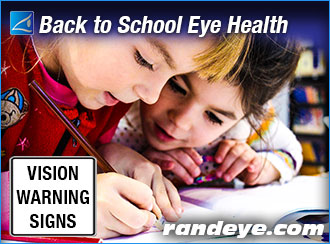Summer’s not over just yet, but back to school is just around the corner.
These are formative years for your child, personally and physically. If you have noticed a change in your child’s behavior it may be due to a change in his or her vision.
Below is a list of warning signs. If your child demonstrates any of these symptoms, it is advisable to consult your eye care professional.

- Child holds reading material too close to face-fourteen to sixteen inches is recommended.
- Child sits too close to TV-eight to ten feet is recommended.
- Complains that writing on classroom blackboard is blurry or too small.
- Missing the ball very often in sports may indicate a problem with vision.
- Child rubs his or her eyes or complains of itching or burning. This could indicate a conjunctival or eyelid problem.
- Child complains of double vision.
- Child points to words while reading.
- Writing words or letters backwards could indicate a problem.
- Child complains of headaches.
- Child skips or misses words while reading.
- Child sees better out of one eye than the other.
- Child complains of pain in or around the eye.
- Poor hand-to-eye coordination.
- Photophobia (bright lights bother eyes).
- Dizziness or nausea.
- Poor concentration while reading.
- Abnormal head tilt while reading.
- Closes or covers one eye to read.
Four out of five children do not receive vision screenings. A screening rarely takes more than an hour and presents no discomfort, but the comfort in knowing that you’ve made your child’s vision a priority, is something YOU should get extra credit for. Call or click today for an appointment because the first school bell is about to ring!
